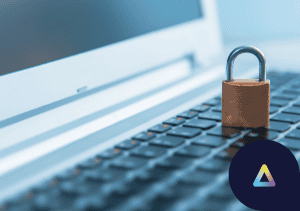30% of the global workforce are working from home in 2022 – However, there has also been a 300% increase in cybercrime since 2020. As the result, auditing a secure working environment has changed for the better, being more reflective of the needs of a modern workplace environment. It is important to audit your own environment to ensure you can meet the standards for a modern cybersecurity framework, as companies are losing millions of dollars due to security breaches alone in 2022. According to Thales, 45% of organizations have experienced either a security breach or failed security audit.
So it is clearly more important than ever to ensure your work-from-home (WFH) environment will stand up to a modernized security audit. But what are the pitfalls in modern WFH endpoint security?
Malware stealing data on remote devices
Malicious software has become an ever-present danger in the post-COVID working environment. Some of the most common are directly related to Malware attacks, those being screen scrapers and keyloggers, both designed to run hidden on a device and collect corporate information. WFH devices are particularly vulnerable to this if they are not consistently updated, are used for other activities, or if the employee can access unsafe websites on the device.
Prevention: ThinScale solutions contain advanced anti-malware features that prevent malicious applications from running, even if a device currently has malware on it, it still will be unable to even launch with ThinScale.
Breaching security compliance standards
Regardless of industry, all organizations dealing with data in any form will be beholden to some form of data regulation authority, most commonly these authorities are PCI DSS, HIPAA, or GDPR. It is vital to comply with these security standards if one is to pass a security audit. Breaches of these standards carry their own substantial penalties. Luckily the majority of compliance standards have documentation stating what is required for an environment to be compliant with their authority. It is recommended that at least one individual in your organization be trained in your relevant compliance standard, or seek an independent cyber security organization to vet your organization.
Prevention: ThinScale solutions are built with compliance with PCI DSS, HIPAA, and GDPR specifically in mind. Configured correctly to your specific guidelines, ThinScale solutions can maintain compliance on the endpoint.
Outdated operating systems introduce risk to the corporate environment
Out-of-date devices are a hacker’s best friend. Security updates are released to close up security gaps that have been brought to the OS distributor’s attention. If a device is out of date, then it is extremely vulnerable to exploitation. This poses a major risk to corporate data security. WFH devices are particularly vulnerable in this way as IT teams can have difficulty enforcing uniform patching to devices remotely.
Prevention: It is vital to have a solution in place that can enforce system updates across the WFH environment. ThinScale solutions allow you to search and push Windows updates across your entire remote estate centrally.
Uncontrolled or insecure network
A vital consideration for work-from-home environments is data security in private networks. Due to this being largely uncontrollable by an IT security team, a VPN is recommended to encrypt data being transferred to and from the corporate network. If a VPN is not used in a WFH environment, then the remote employee’s IP address could be compromised and the organization risks their data being accessed by malicious actors.
Prevention: So regardless of your endpoint security solution, it needs to support the use of a VPN to secure corporate data across networks, luckily, ThinScale solutions work with any Windows-Based VPN. Ensuring data encryption regardless of where you work.
Lack of control over device access
Control over who has access to corporate resources is much more difficult in shared spaces like WFH environments. Easily breaching confidentiality requirements is possible – especially where devices are shared, for example, by a family. This is why it is vital to have some form of authentication enforced so that only those actually meant to are able to access corporate data.
Prevention: ThinScale solutions support multiple authentication providers as well as domain authentication – ensuring that only those with the proper credentials can access any corporate resources.
Credentials being accessed by unauthorized parties
Any security-conscious on-premises endpoint environment will have refreshes of their employee passwords in order to maintain security and prevent the risk of unauthorized access. In WFH environments, these refreshes are even more important and should be enforced every quarter. Otherwise, employee credentials are at greater risk of falling into the hands of unauthorized personnel.
Prevention: ThinScale solutions support all authentication methods, and does not interfere with an organization’s scheduled credential updates, and immediately take any changes made to the employee credentials into account.
Multiple attack vectors and locations from which to leak data
All main corporate data should be saved in one cloud location, this way IT security teams can better keep track of the data and control access easier. The risk of every employee saving data to multiple cloud locations or locally is that this potentially gives malicious actors more opportunities to access this data outside of the awareness of the IT team. Even apps that are running locally should be feeding data back to a centralized cloud – ideally with some form of write filtering on the local machine.
Prevention: ThinScale solutions are built to support any virtualization provider – and can enforce strict security policies that ensure that no data can be saved on the endpoints themselves.
Lack of employee cybersecurity-awareness
One of the best preventatives against security breaches is awareness. Endpoints are the most vulnerable part of the IT stack, meaning the end-user is the most at risk. This is only exacerbated by WFH and the lack of IT control over the environment and employee actions. Most cybersecurity frameworks have employee training as part of their metrics and this should not be ignored by any company. We are no longer able to leave cybersecurity as something only worried about by IT – all employees should be given training in cybersecurity awareness and basic cyber hygiene.
Prevention: ThinScale solutions lead with true Zero-Trust security, in that employees using these devices cannot do anything outside of what has been specifically vetted by IT. This means employees will have less opportunity to put themselves at risk.
Conclusion
WFH brings a very different security environment that IT teams must acknowledge if they are to pass security audits. Solutions to the difficulties WFH can introduce are multifaceted and must be taken into account if an organization with WFH employees is to succeed in a cybersecurity audit.
Get in touch with us below to discuss your WFH security requirements and let’s make sure you’re in the best possible position to pass your next audit.



